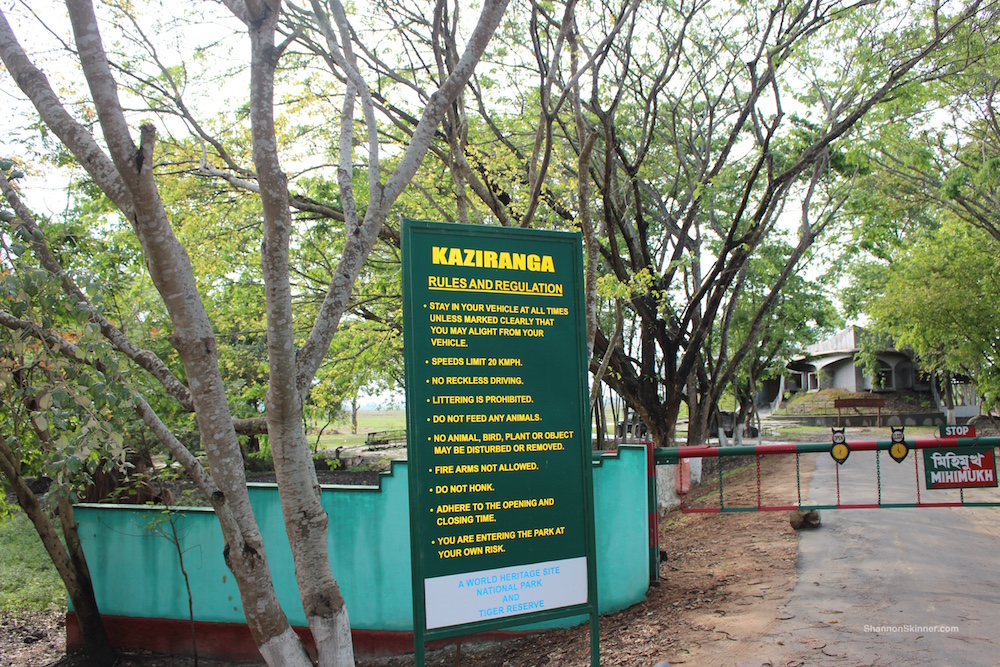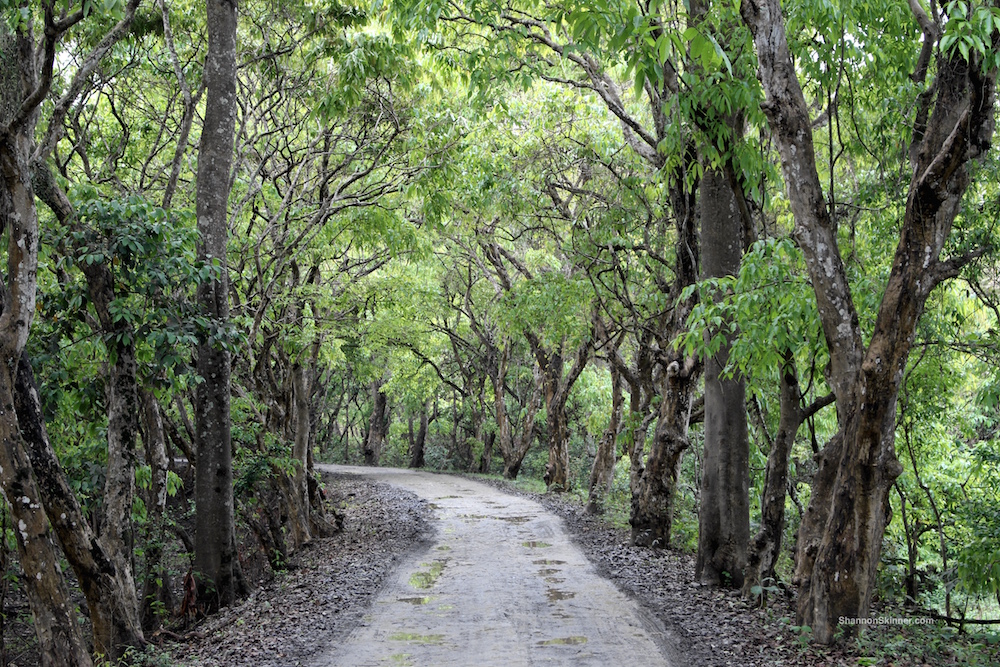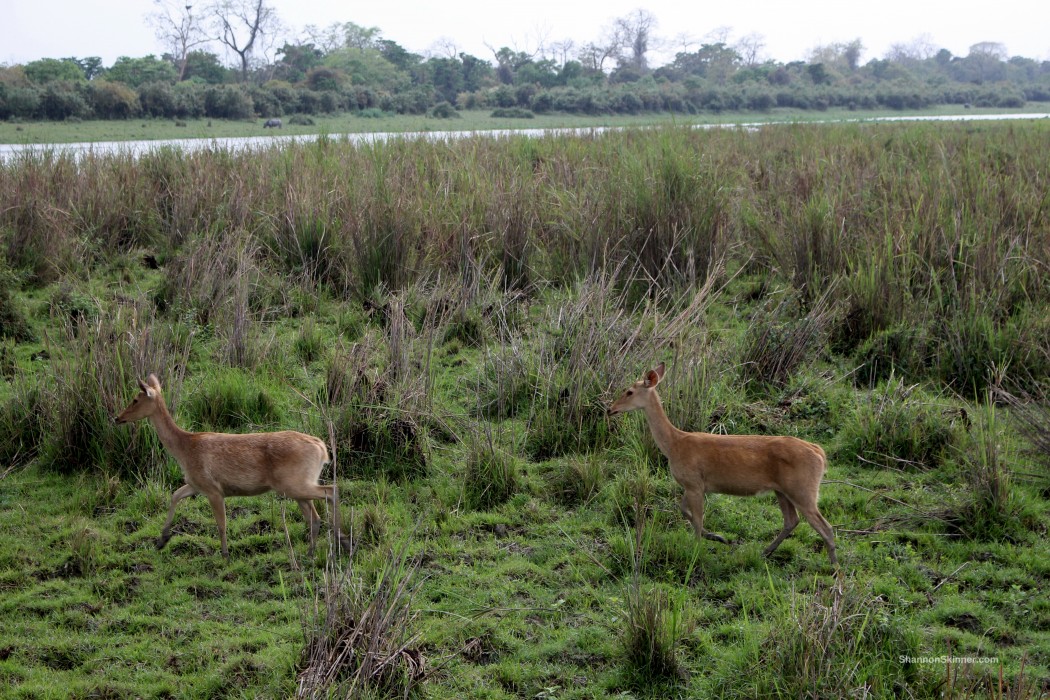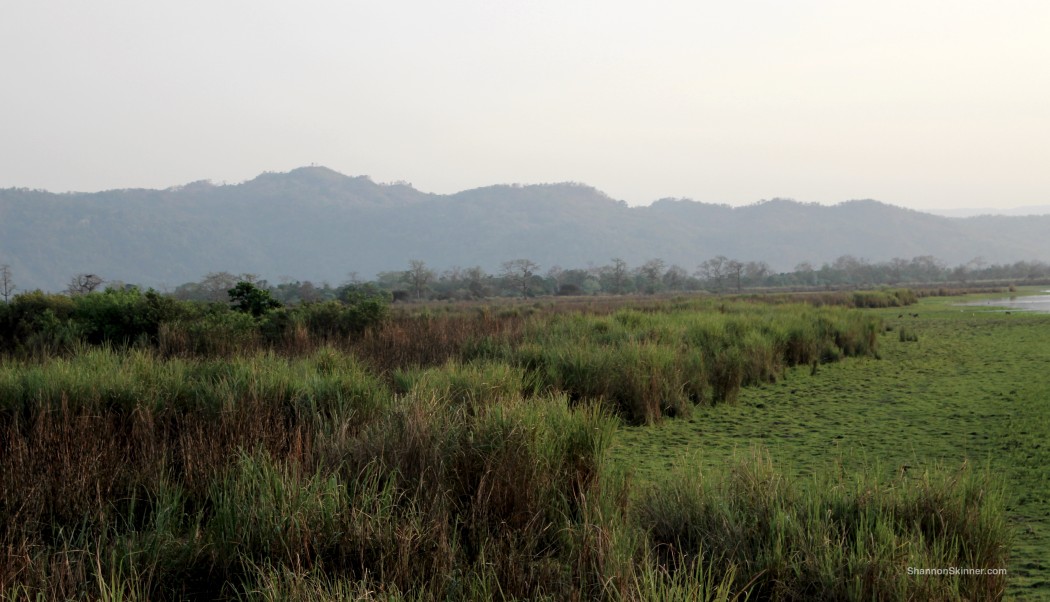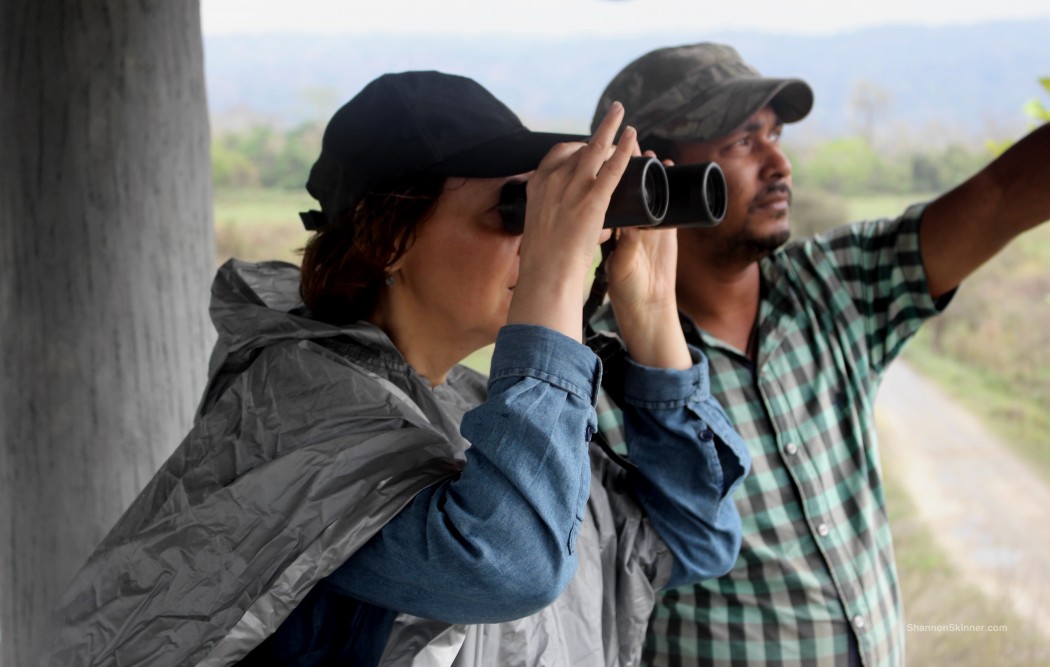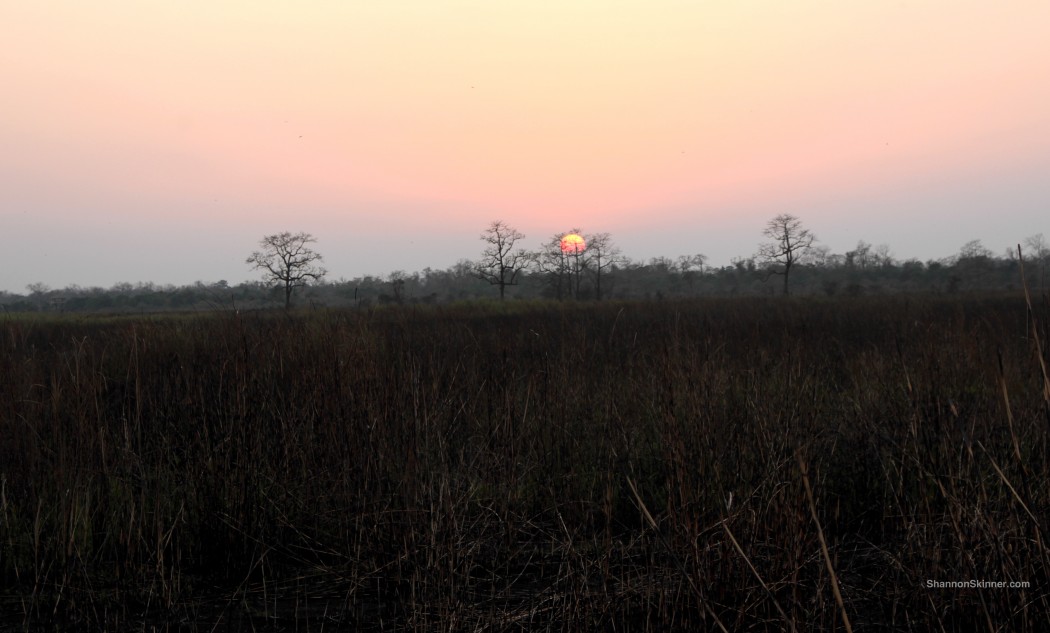The rhino, the tiger and me: Safari in India
 SHANNON’S TRAVEL BAG: Travel Tips for Women
SHANNON’S TRAVEL BAG: Travel Tips for Women
Shannon travels to India. This is part 5 in a series of articles.
Safari in Kaziranga National Park, Assam, India
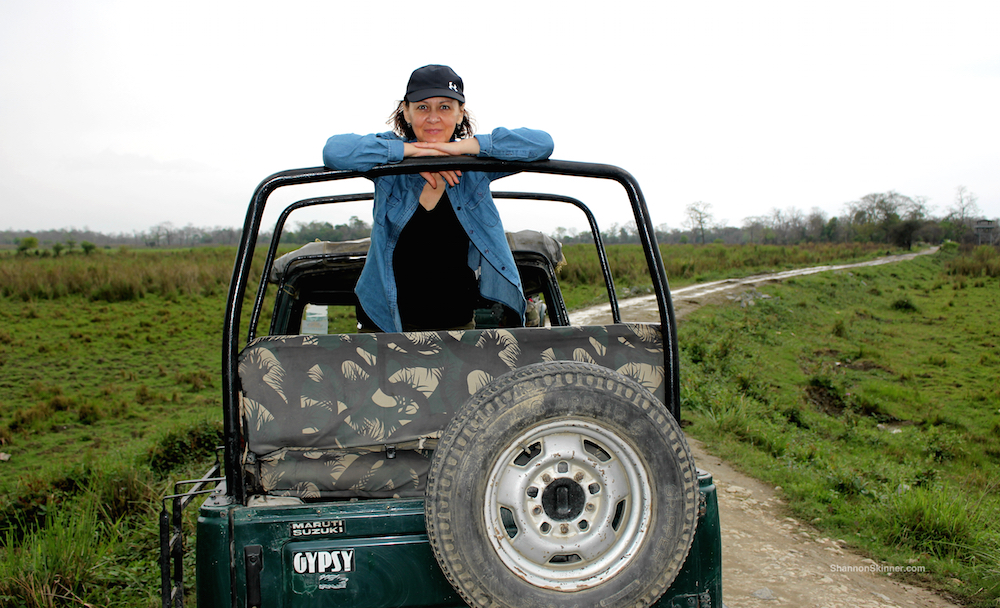
I am bouncing in the back seat of an open Jeep as it meanders through India’s Kaziranga National Park, a wildlife sanctuary and UNESCO World Heritage Site located in the northeastern state of Assam. Despite the spitting rain, I am grateful to be on my first-ever safari. It is April and the Monsoon season is approaching. Just not yet.
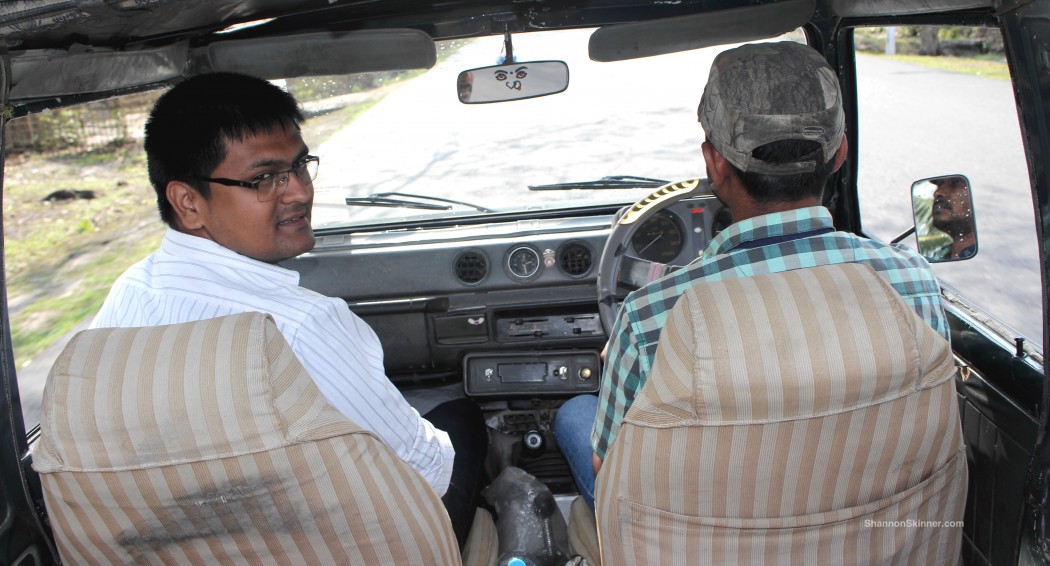
My guide and ranger at the wheel
Joining me is my guide, Dipankar Borkakati, an Assamese native who has taken care of me since landing in the city of Guwahati, Assam’s capital, where I spent my first few days in India covering a cultural festival, Rongali Bihu. Even after a hair-raising 5 hour drive together through the vast state’s rich fertile land, villages and tea plantations to reach Kaziranga, we are thankfully still friendly. Driving our Jeep is an experienced and friendly ranger. I hope he has a gun, you know, just in case we get chased by crazed pelicans.
All arrangements for the safari experience including my guide, transportation and accommodations were provided by Vasco Travel, whose team in Delhi worked tirelessly on perfecting every detail, even checking in with me daily by phone. Considering they are the leaders of inbound travel to India, I know I am in good hands.
Park rules
Living amongst Kaziranga’s tall grasslands, tropical forests, lakes and swamps that surround us are several species of mammals including the once endangered one-horned Indian rhinoceros, Indian elephants, water buffalo, swamp deer, barking deer, pelicans, Ganges dolphins, leopards, fishing cats and the Royal Bengal Tiger, to name a few.
Kaziranga lies in the flood plains of the famous Brahmaputra. Most of the area gets flooded from the river during the Monsoon season, and the elephants and other animals migrate to higher ground prior to it.
Deer with one-horned rhinos in the distance, other side of swamp
My guide points to something in the distance. Tiger? No. In the grasslands ahead is a lone elephant with a man riding – actually, standing — on its back as they saunter across the plains. I am amazed at the man’s balance and grace riding this massive and awkward creature.
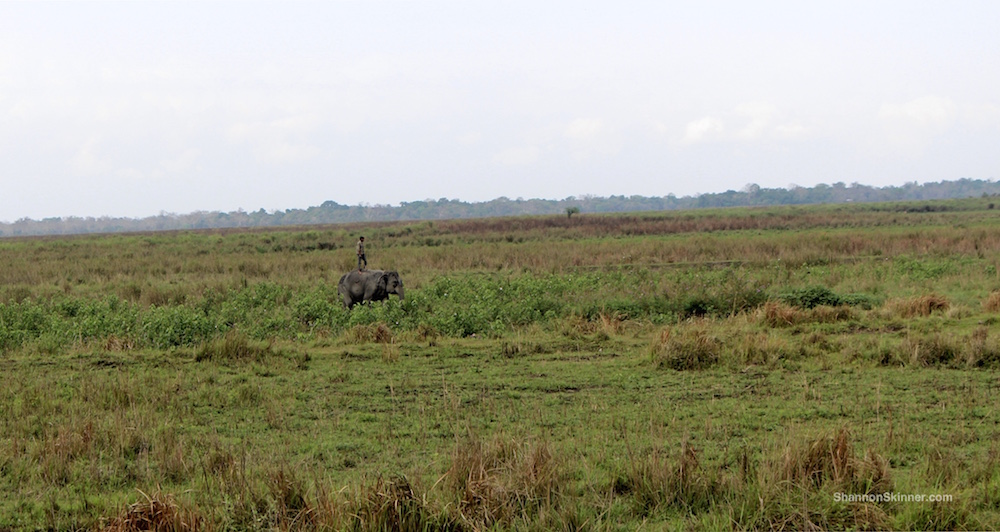 Man riding elephant
Man riding elephant
We continue. Bumpity-bump. I am glad I went to the washroom before leaving the Infinity Resort. It is late afternoon, the sun will soon set and we don’t have long in the park. The silence is deafening, save the occasional jeep of tourists traveling the same dirt road.
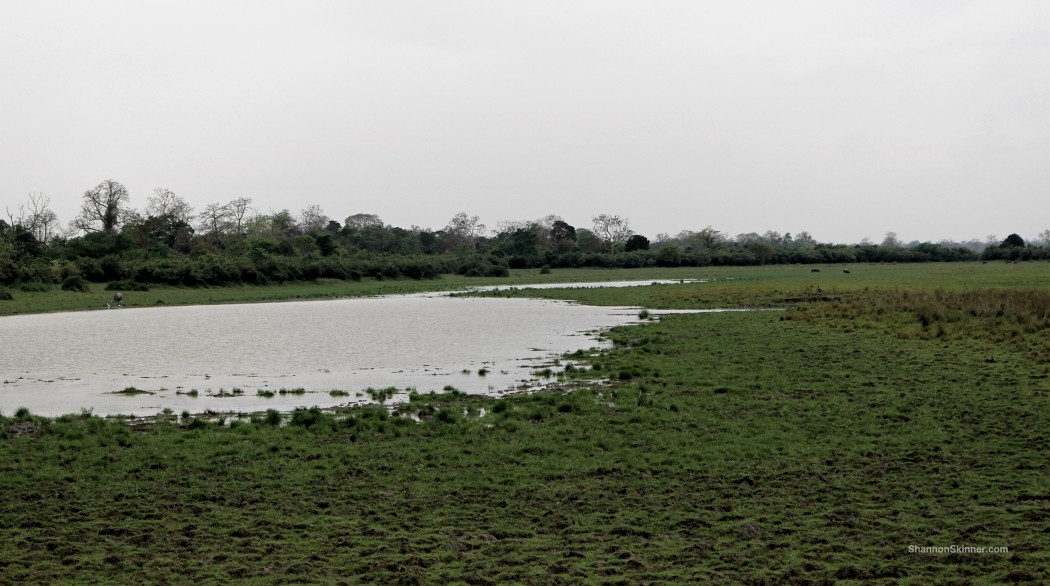 One-horned rhinos at edge of the water
One-horned rhinos at edge of the water
My guide points again. Tiger? Nope. Poking though the tall grasslands and not more than a few meters from us appears one of India’s most prized possessions: the one-horned rhinoceros. Given rhinos are known to run fast, really fast, my heart races. We gaze at it in all its glory. My guide whistles to get its attention. It sees us. It most definitely sees us. Just as I grab my camera, it turns around and it…
…snap…
…drops a load.
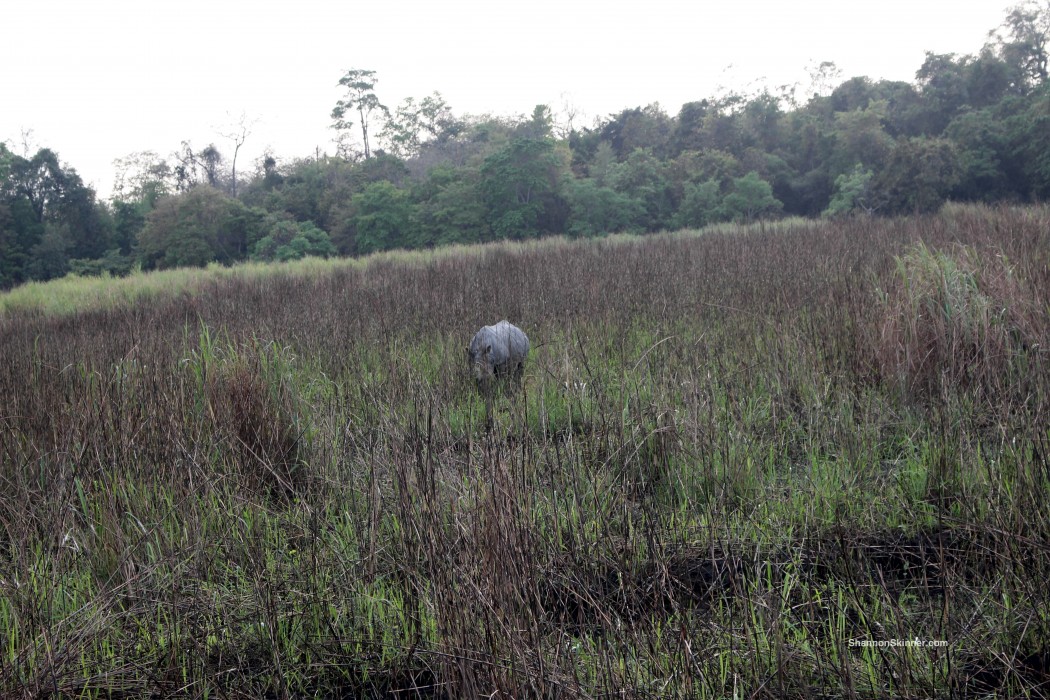
A dignified view of the same rhino
Behind it, in the far distance, are more rhinos, elephants, and herds of water buffalo and deer.
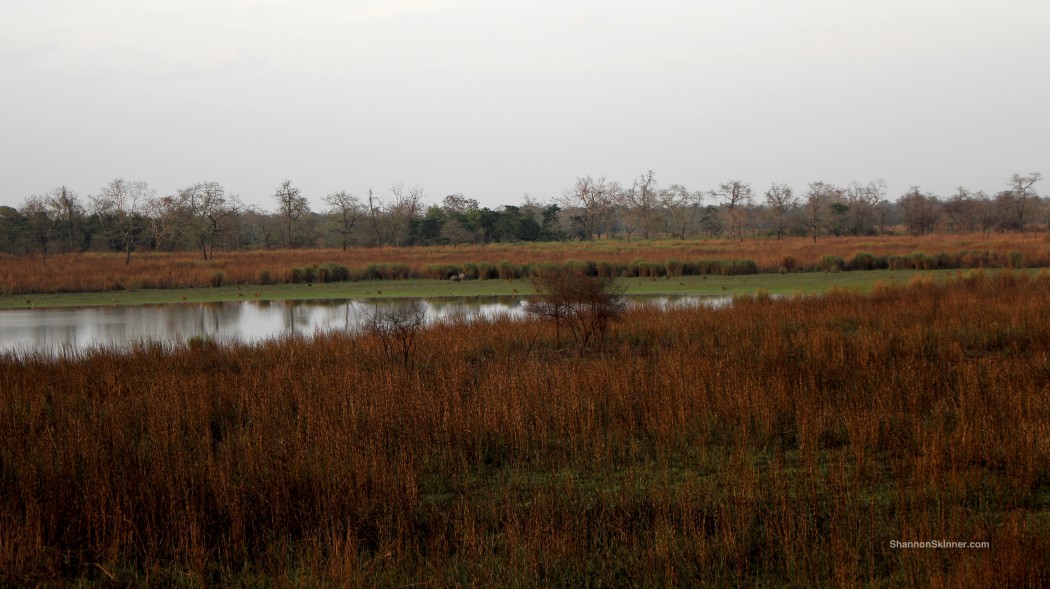
Rhinos, water buffalo, deer and many other mammals co-exist
But no Royal Bengal Tiger. Yet. Tigers are often seen here. The ranger tells me the population is more than 100 and they are “very shy.” Part of me wants to see one, and part of me does not because it means that if I see it, the likelihood is it would see me, too. I think of Yann Martel’s Life of Pi.
Another jeep of tourists stop to inform us they just spotted the legs of a tiger in the foliage alongside our road, but apparently got scared off by an oncoming truck. I am fully wide-awake.
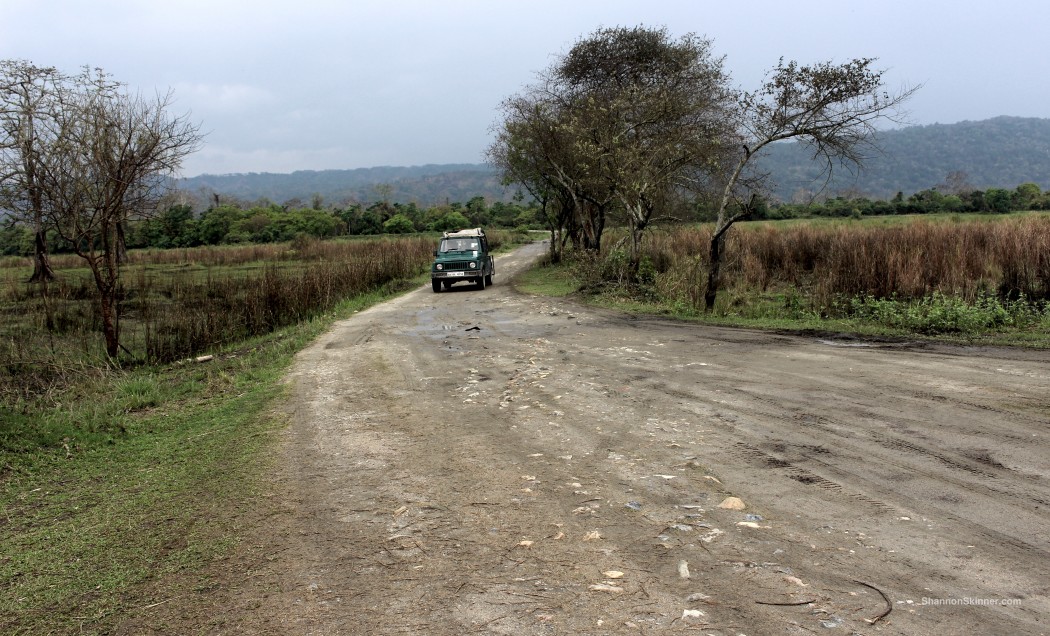
As we journey ahead, I hear dogs barking. My guide informs me it is not dogs, but rather the barking deer and when they bark, it is a warning signal to the rest of the herd that a tiger is near.
A tiger is near.
Grasslands and hills in background
Ranger Nekib explains park life. Where is the tiger?
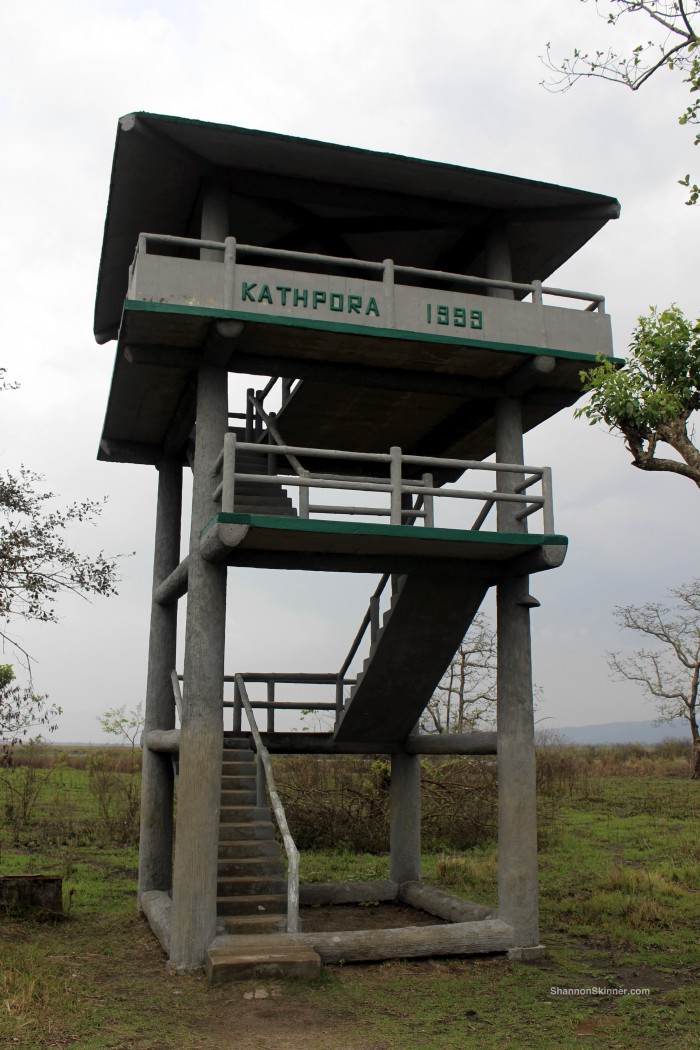
We climb a watchtower and with binoculars scan the grasslands and lake below. Pelicans are resting. The sun is rapidly falling, washing the plains with “Bengal Tiger” orange.
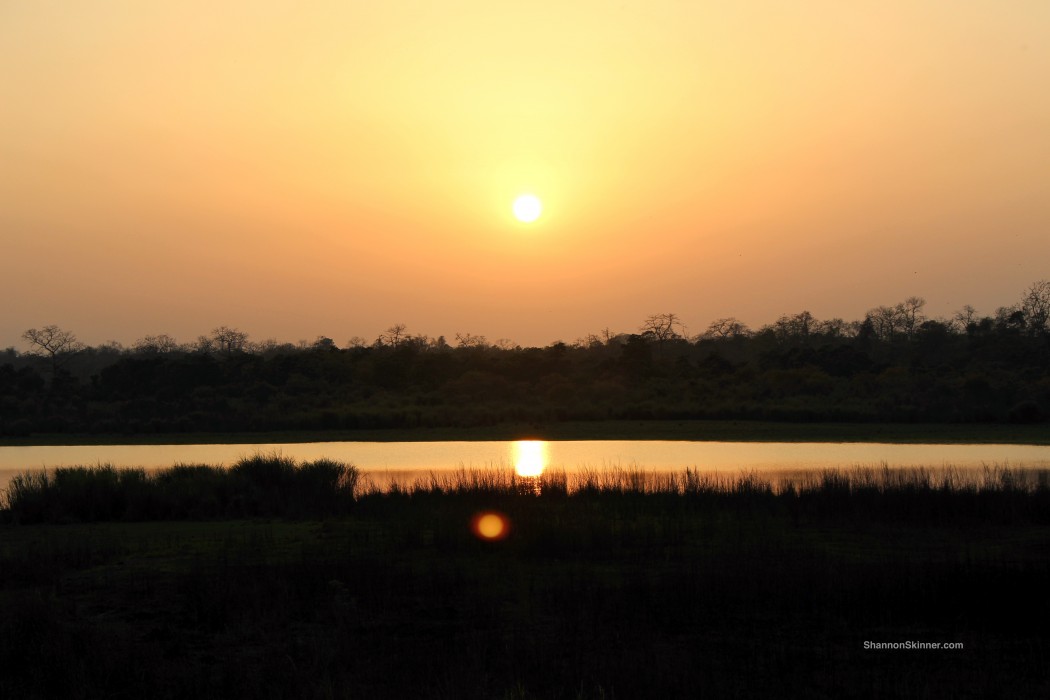
Sunset in Kaziranga National Park
I take one last scan for the shy tiger. But, alas…
After a ninety-minute adventure, it is time for us to leave or we will be in trouble. As we ramble out of the park, my guide, Dipankar, leans back and says: “You will have to return to Kaziranga. The tiger is calling you back.”
Only a few minutes later, because I love sunsets
* * *
Where to stay: Near Kohora Town is Infinity Resort Kaziranga, a luxury hotel set in a bamboo grove, which has a main building with a restaurant, spa, internet, and spacious guest villas set on stilts. Prices from $85-155 per room/night.
How to get there: Kaziranga’s Park Gate is located at Kohora Town. The closest airports are in Jorhat (100 km) and Guwahati (240 km). Then by car is the best way to the park.
Traveling to India? Vasco Travel (www.vascotravel.net), based in Delhi, is the industry leader in in-bound travel to India (in Canada, Vasco is represented by Canadian Travel Services www.CanadianTravelServices.ca). For flights, visit Air India (www.airIndia.in), a Star Alliance Member (my route Toronto-London-Delhi-Guwahati). Resources: India Tourism (www.IncredibleIndia.org) and Assam Tourism (www.AssamTourism.gov.in).
* * *
Read my other stories in the India series:
India’s Incredible Living Root Bridges
In Picture: Rongali Festival in Assam, India
Rongali Festival in Assam, India and my unexpected fame
Traveling to India? Here’s some expert advice from Vasco Travel
Shannon Skinner is a television host, inspirational speaker, writer and traveler. Read her travel stories at Shannon’s Travel Bag.

